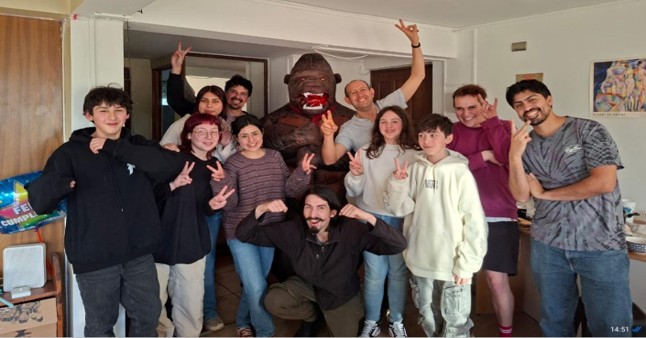 Welcome to the LADE’s web page! We are a dynamic research group caring about diversity, inclusivity and curiosity-driven science. We make our best effort to produce the most rigorous data by maintaining a respectful, collaborative and fun working environment.
Welcome to the LADE’s web page! We are a dynamic research group caring about diversity, inclusivity and curiosity-driven science. We make our best effort to produce the most rigorous data by maintaining a respectful, collaborative and fun working environment.
We ask the following research questions:
How is osteogenic differentiation regulated during developmental and regenerative processes?
1) Skull closure
Since the LADE’s early days, we have been interested in understanding how a soft mesenchymal membrane is progressively converted into mineralized bone through an intramembranous ossification process (Espinoza et al., 2010). By combining ChIP-Seq ATAC-Sea and RNA-Seq, we recently have produced an atlas of bone¬specific regulatory regions in Xenopus tropicalis (Castillo et al., 2024) and are currently working on functional assays such and transgenic reporters and crispants.
2) Skull regeneration
We have implemented a bone regeneration assay in Xenopus tropicalis, showing that a traumatic skul injury can efficiently be repaired in as little as 15 days (Muñoz et al., 2018). Our recent ATAC-Seq and ATAC-Seq data suggests that, upon damage, skull osteoblasts dediferentiate through the reactivation of pluripotency genes such as sox2.
Which evolutionary forces drive regulatory network rewiring?
1) Allotetraploidy
We are currently examining how regulatory rewiring might have impacted different aspects of osteogenesis by comparing the diploid species Xenopus tropiclalis to its sibling allotetraploid species Xenopus laevis. Our latest data does reveal important regulatory divergence between both species, correlating with expression changes at the loci of crucial osteogenic genes, and a central question is to understand if this occurred through gain or loss of bone-specific enhancers in each frog lineage. Intriguingly, we found that evolution tinkers with genes involved in human skeletal diseases such as osteomalacia and craniosynostosis.
2) Transposon domestication
We are examining how DNA and RNA transposons might contribute to regulatory regions in Xenopus laevis and Xenopus tropicalis. We have shown how DNA transposons were domesticated into liver-specific enhancers specifically in the Xenopus tropicalis lineage (Rojas et al., 2025). Recent unpublished data also reveal how DNA transposons were exapted into ubiquitous promoters in the last common ancestor of Xenopus laevis and Xenopus tropicalis.
How did skeletal biomineralization evolve deep in the vertebrate lineage?
While fossils taught us that skeletal tissues evolved long before the emergence of the jawed vertebrates, extant chondrichthyan (sharks, rays, holocephalans) represent our best opportunity to understand the origin of biomineralization from a developmental and genetic perspective. We are exploring this exciting topic in close collaboration with the laboratory of Mélanie-Debiais Thibaud from the University of Montpellier (Castillo et al., 2024; Leurs et al., 2022; Romero et al., 2021; Debiais-Thibaud et al., 2019; Enault et al., 2018; Cervantes et al., 2017; Enault et al., 2015; Bertrand et al., 2013).
Can a dioxin detection system be implemented in Xenopus cells and tadpoles?
A more “applied” line of research focuses on dioxin bioassays (Otarola et al., 2018). We have developed a vector able to detect nanomolar amounts of dioxins in amphibian cell cultures (Submitted), and now aim the “scale up” this prototype by generating transgenic larvae that will serve as useful sentinels to monitor the quality of environmental waters.
